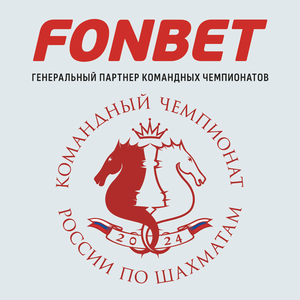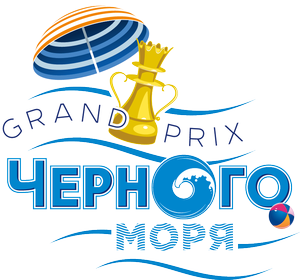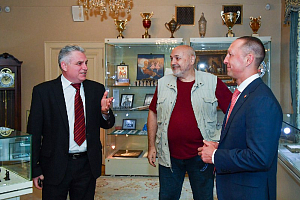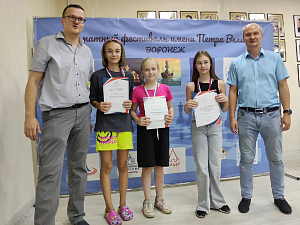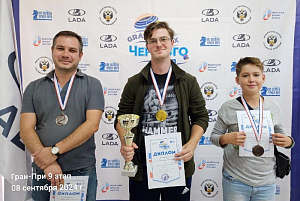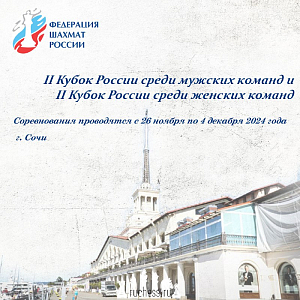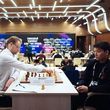Illusion of a Study
Vladimir Barsky reports from Berlin about round nine of the Candidates Tournament
Five years ago Vladimir Kramnik prepared a bullet-proof opening against 1.d4 for the Candidates tournament in London, an improved Tarrasch Defense, which he used to confidently thwart all attempts by White to achieve an edge. Let's add that this defense was known as "improved” long before Kramnik started employing it, and Vladimir managed to improve it even further, introducing many original ideas. The opening instantly caught extreme popularity and was even viewed by some as a refutation of d2-d4 by giving Black a forced draw! However, passions cooled down gradually, and inquisitive minds opened new opportunities for White. Kramnik has remained faithful to his weapons, and Grischuk managed to take him by surprise in their recent game. In round nine Vladimir was Black again, and it was yet another time when he was “presented” with a novelty in the improved Tarrasch defense.
The logic of things demanded that Kramnik patiently sit out a slightly inferior position, but following a number of inaccuracies in previous rounds this turn of events obviously did not suit him, and he decided to hot things up without delay. One by one, Black carried out two pawn breaks in the center, but they were not well prepared, and the situation became critical before long. Sergey Karjakin had no remorses in accepting each generous sacrifice from his opponent; Sergey secured his king and got down to converting a huge material superiority afterwards. However, at a certain moment the impression was such that Black managed to engineer a fortress in keeping with the studies by famous chess composer Genrikh Kasparyan devoted to positional draws, but it was just an illusion. Karjakin broke through the opponent's defenses, and Black recognized his defeat immediately after the first time control.
Levon Aronian and Shakhriyar Mamedyarov finished their game before the Russian grandmasters, and attended the press conference ahead of them for that reason. Meanwhile, Sergey Karjakin ascended the VIP-room to discuss the events with grandmaster Alexey Shirov, the tournament guest; there he learned computer evaluations about the crucial moments of his game and shared his impressions with your correspondent:
– I think there is enough quality in our game, especially taking into account a crazy nature of the position we had on the board.
Karjakin – Kramnik
1. c4 e6 2. Nc3 d5 3. d4 Nf6 4. cxd5 Nxd5 5. e4 Nxc3 6. bxc3 c5 7. Rb1 Be7 8. Nf3 0-0 9. h4!?
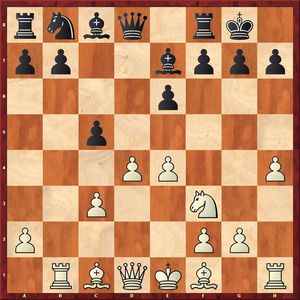
This idea belongs to my second, Alexander Riazantsev, and I am grateful to him for it! However, after 9…cxd4 10. cxd4 Nc6 11. h5 we, of course, did not expect 11…f5, because it was other than self-suggestive and because of a host of other more tranquil continuations available to Black. In response to 9.h4 he was not obliged to react with 9…cxd4 10.cxd4 Nc6 in the first place, but even after 11.h5 logical looking is 11…h6, among other continuations.
I could have met 11…f5 with 12.e5, as we have just been discussing it with Alexei Shirov, but it did not appeal to me that 12…b6 and 13…Bb7 he would gradually allow my opponent to mount blockade on the d5-square. It would give rise to a complex position in which I am slightly better, but I thought I had a more principled continuation at my disposal.
12. exf5 Qa5+ 13. Bd2 Qxf5 14. Bc3!
This is a strong move: I defend against taking on d4 and pave way for another bishop to show up on d3. It is important that 14…Qg4 is impossible (in an attempt to get at the g2-pawn), because I can meet it with 15.Be2, and 15…Qxg2 fails to 16.Rg1 Qh3 17.d5. If the g2-pawn is not taken, I play 16.Kf1, keeping all pluses of my position.
I believe that after 14…h6 15.Bd3 Qg4 16.Kf1 White’s advantage is significant already. 16…е5, looks interesting, but it is a move that can be assessed as overly sharp and objectively bad.
17. d5! e4 18. dxc6 exf3 19. gxf3
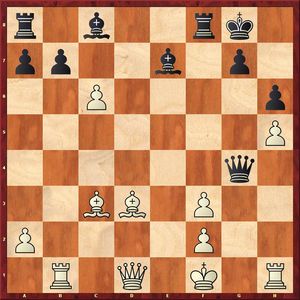
19…Rxf3
I rather anticipated 19…Qxf3, but after 20. Qxf3 Rxf3 21. Ke2 Rxd3 22. Kxd3, and I am up an exchange in a technically winning position.
20. Be2
I was told that after 20.cxb7 Bxb7 21.Qb3+! there is a complex computery win, but it was beyond me because I am not a computer! I took for a reliable human approach without letting my edge go, although Black was not without definite practical chances to make a draw. At no moment, however, did I see a clear path to equality; I do not think White missed his significant edge anytime during the game. When Black sacrificed an exchange, I was absolutely confident that I was winning. After all, White can give back a rook at an opportune moment to disentangle myself, retaining a decisive edge in the meanwhile.
20... Rxf2+ 21. Kxf2 Bc5+ 22. Kf1 Qf4+ 23. Bf3 bxc6 24. Be1 Be6 25. Bh4 Rf8 26. Kg2 Kh8 27. Rc1 Rf5 28. Rc3 Rd5 29. Bxd5 Bxd5+ 30. Rf3 Qg4+ 31. Bg3 Bd6 32. Rh3 Be7 33. Qe2 Be4 34. Qf2 a5 35. a4
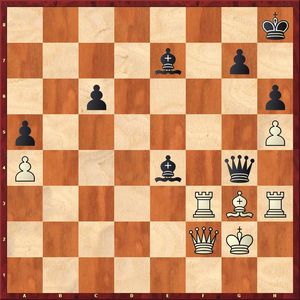
35… c5
In the case of 35... Bd5 36. Rh1 Bc5 White is winning after 37. Rh4! Qxh4 38. Bxh4 Bxf2 39. Kxf2 Bxf3 40. Kxf3 g6 41. Bd8, etc.
36. Rh1 Bf6 37. Re1 Bc6 38. Ree3 c4 39. Qe2 Qxh5 40. Qxc4 Bd7 41. Rd3 Black resigns.
– I am, of course, happy about good games of the recent rounds in which I managed to demonstrate some interesting ideas in the opening. Following an underwhelming start it is very important for me to show that I am well prepared for the tournament and am still capable of achieving something. I assume there are quite a few out there who have second thought about it already! - and Sergey burst out into contagious laugher.
Meanwhile, Aronian and Mamedyarov were sharing the nuances of their drawn game in the press center. Ironically, the pawn structure in their encounter was similar to the one seen the day before in the Mamedyarov – Karjakin duel. In that encounter Shakhriyar let Black go without creating any problems, but Levon’s actions kept both his opponent and his second Alexei Dreev on their toes. The Azeri grandmaster’s performance lacked confident at first, and it was in vain that he refused from trading a pair of rooks, but when his position started raising concerns, he managed to pull together and launch counterplay sufficient for a draw.
The encounter between Wesley So and Alexander Grischuk offered little in the way of exciting content. It seems as if the American grandmaster lost interest in the tournament: he handled the opening as Whites into a completely harmless setup, willingly agreeing to trade more and more material. When the board was nearly devoid of material, the opponents signed a peace agreement.
This said, the sole leader Fabiano Caruana was close to increasing his gap over the closest pursuers. He managed to catch Ding Liren unawares, forcing the Chinese grandmaster to weaken his pawn structure and then getting down to systematically undermining the opponent's defenses. It turned out before long that Black’s task was a lot more challenging than might seem at first glance: his king was caught in a corner, and Fabiano tried to organize a mating attack, combining the efforts of his rook, bishop and knight. In the first half of the event Caruana managed to outplay Kramnik with the same combination of pieces, a defeat which the Russian grandmaster has yet to recover from. Ding Liren was also given a hard time, but he demonstrated incredible tenacity and bailed out into a draw.
At the press conference, Caruana showed many beautiful lines, which he had to calculate during the game, but he did not see a clear win for himself should Black defend precisely. However, there was one at the very end of this exhausting game, literally one move before a draw was agreed. When one of the journalists voiced the computer recommendation, Fabiano froze for a second, his countenance changed, and he leaned back in the chair, realizing that the fourth victory was almost as good as in his pocket. Nevertheless, he quickly mastered himself and went on to answer questions as if it mattered not at all.
Caruana – Ding Liren
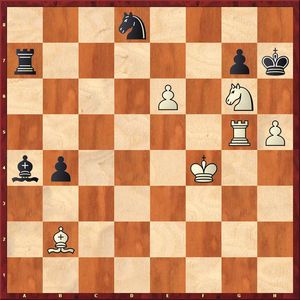
66. Re5?
Winning was 66. Nf8+ Kg8 67. h6! Re7 (or 67... Kxf8 68. h7! Nxe6+ 69. Ke3 Nxg5 70. h8Q+ Ke7 71. Qb8, and Black picks up the а4-bishop as well) 68. Rxg7+ Rxg7 69. Bxg7 Bb5 70. Bd4, etc.
66... Be8! 67. e7 Draw.
The tournament standings after round 9:
1. F. Caruana - 6 out of 9; 2. S. Mamedyarov - 5.5; 3. A. Grischuk - 5; 4-5. S. Karjakin, Ding Liren - on 4.5; 6-8. L. Aronian, V. Kramnik, and W. So - on 3.5.
Wednesday, March 21, is a rest day.
Round 10 is scheduled on Thursday, March 22, and features the following pairings: Grischuk - Karjakin, Kramnik - Aronian, Mamedyarov - Caruana, Ding Liren - So.
Pictures by Anastasiya Karlovich and Vladimir Barsky








